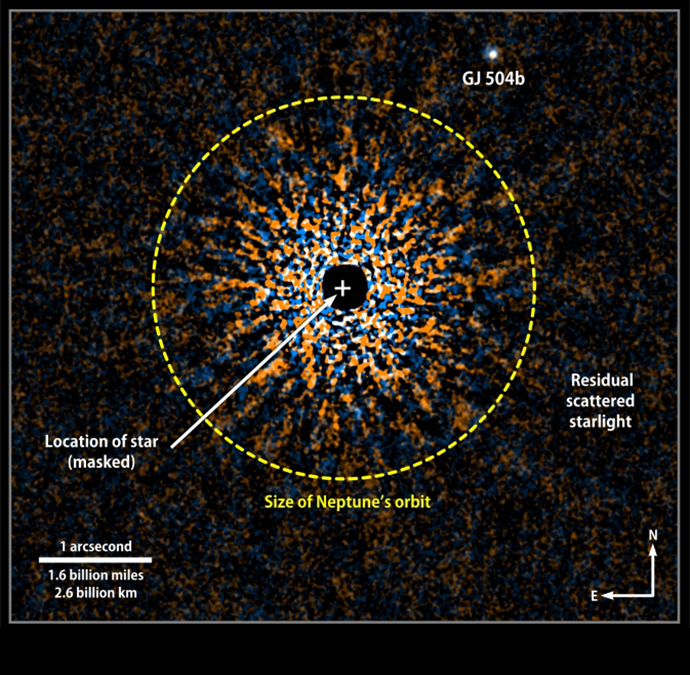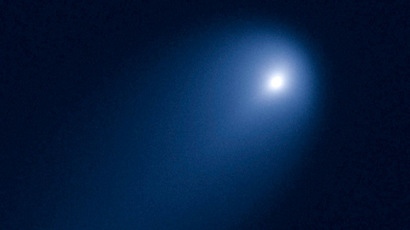Curvy, hot & pink: NASA shows smallest-yet imaged exoplanet

Meet GJ 504b, a cute-looking Jupiter-sized planet, currently the lowest-mass celestial body outside of solar system, which astronomers managed to image directly.
Glowing a dark magenta, the newly discovered exoplanet weights four times Jupiter’s mass, reports NASA. It runs around GJ 504, a star similar to the Sun located 57 light-years away, which can be spotted by the naked eye in the constellation of Virgo.
The planet was spotted by an international team of astronomers, who used an infrared camera of at the Subaru Telescope in Hawaii combined with the device’s advanced adaptive optics to image it.
"If we could travel to this giant planet, we would see a world still glowing from the heat of its formation with a color reminiscent of a dark cherry blossom, a dull magenta," said Michael McElwain, a member of the discovery team at NASA's Goddard Space Flight Center in Greenbelt, Maryland. "Our near-infrared camera reveals that its color is much more blue than other imaged planets, which may indicate that its atmosphere has fewer clouds."

The pinky planet’s star is a younger and slightly hotter cousin of the sun. The planet itself is also quite hot compared to Jupiter, with an effective temperature of about 237 Celsius. Interestingly, the distance form GJ 504b to its star is about 43.5 AU, or 43.5 times that of the distance from Earth to the sun, which offers some challenging question for the scientists to meditate upon.
The most common theory on how Jupiter-like planets are formed says that they begin their lives as gas-rich debris discs surrounding a young star. Colliding asteroids and comets produce a core, which after reaching a sufficient mass quickly pulls in the gas disc forming a planet. The theory works fine for planets with distance to the star up to 30 AUs, but is more problematic for those located further away.
"This is among the hardest planets to explain in a traditional planet-formation framework," explained team member Markus Janson, a Hubble postdoctoral fellow at Princeton University in New Jersey. "Its discovery implies that we need to seriously consider alternative formation theories, or perhaps to reassess some of the basic assumptions in the core-accretion theory."
Direct imaging, while providing much useful data, is not the most precise method currently used to find exoplanets. So GJ 504b is not the smallest planet found in the universe. Kepler-37b discovered in February about 210 light-years from Earth in the constellation Lyra is slightly larger than our moon and is smaller than any planet in the solar system.














